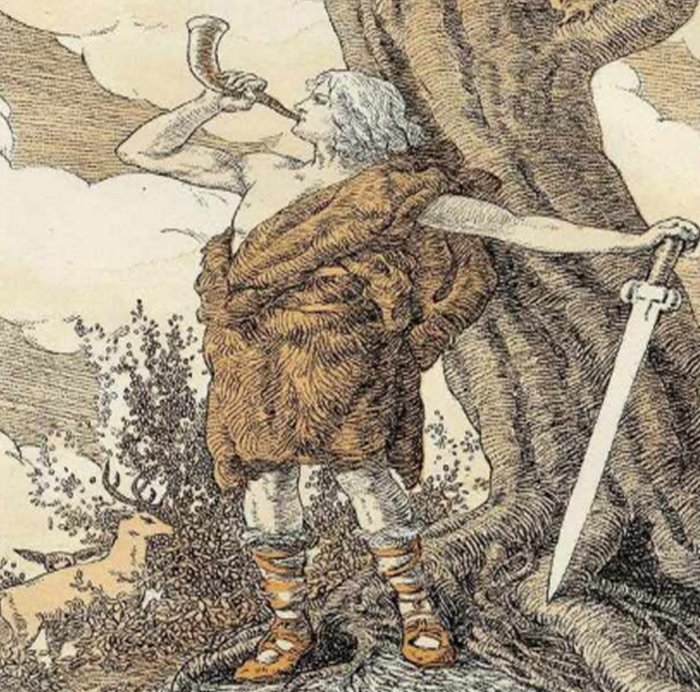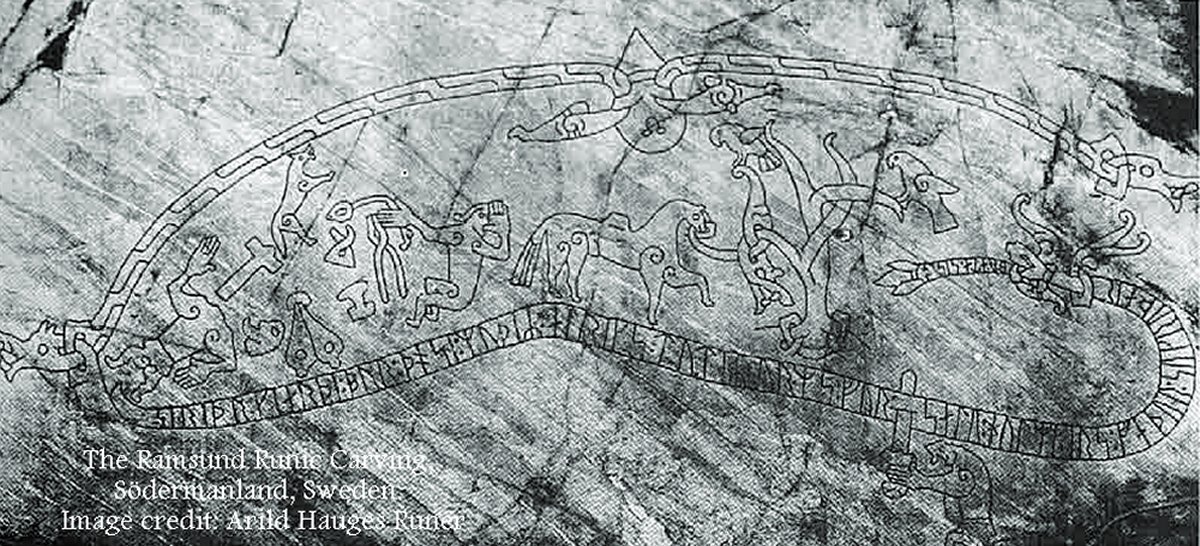Sigurd Fafnirsbane – Legendary Dragon Slaying Warrior And His Magical Sword
A. Sutherland - AncientPages.com - Many Norse legends passed down from generations are devoted to Sigurd (also known as Siegfried), the famous and legendary slaying warrior of supernatural stature.
Legendary warrior Sigurd blows his horn. Drawing by Arthur Rackham, 1911
His story is particularly well-known from the Ramsund carving (c. 1000) and the Gök Runestone dating to the 11th century, both in Sweden.
Sigurd is among the greatest of the Norse heroes. In the 13th century Icelandic "Volsunga Saga," he is not a god or a demi-god but an ordinary, brave young man, the son of Sigmund and Hjordis.
Sigmund is killed by Odin, who fought him in disguise as an old beggar. The best way to kill Sigmund is to destroy his sword in pieces making Sigmund weak and helpless against his enemy.
Before his death, Sigmund asks his pregnant wife to gather all the pieces of his shattered sword and give them to their son when he grows up.
Illustration by Hermann Hendrich 1906
After Sigmund's death, Hjordis marries the king's son Alf, and Regin, the son of the dwarf king Hreidmar, is appointed the boy's teacher. He teaches him languages, runic secrets, chess, and other necessary skills for the high-born. One day, Sigurd enters the woods, meets an older man with a long beard (yet another Odin's disguise), and offers a horse.
"Raise this horse carefully, for it is descended from Sleipnir," says the man. Sigurd listens to the older man and chooses Grani, the grey horse.
Now, he possesses his favorite horse and some precious fragments of his father Sigmund's magical sword. He also has Regin (in some tales known as Mimir, the smith), a deceitful man who involves Sigurd in his family's dramatic affairs. Regin tells Sigurd that he has a brother responsible for killing their father and stealing all of the gold, denying Regin his rightful share.
Description of the drawing: Stabbing of the dragon – at the bottom right of the carving, while to the left, lies the dead Regin, Sigurd’s betrayer with his smith’s tools. Besides him, Sigurd sits, roasting the dead dragon’s heart over the fire. He is holding his burnt thumb to his mouth. Birds are also seen, and when he tasted the blood from the dragon’s heart, he knew the language of the birds, perching in the tree behind, to which his favorite horse Grani was roped.
But the gold is cursed, and after the theft, Fafnir transforms into a hideous, evil dragon, jealously guarding his treasure.
Many years have passed, but Regin patiently waits and hopes that someday he finds a hero strong enough to punish Fafnir for his wrongdoings and avenge his father's death. Sigurd agrees to help Regin and swears to slay the dragon.
Sigurd Kills Fafnir, The Dragon
Sigurd is famous for his brave deeds, but the greatest one is the killing of the dwarf Fafnir. Transformed into a dragon, Fafnir is the most courageous, powerful, and aggressive of the three sons of King Hreidmar, according to the "Volsunga Saga."
The fragments of the magical sword are used to create a formidable weapon equal to that his father Sigmund once possessed to slay the dragon,
After finding Fafnir in his dwelling place, Glittering Heath, Sigurd begins digging a ditch to hide and then attack the dragon.
This inscription, located at Gök, about 5 kilometers west of Strängnäs, is on a boulder and is classified as being carved in runestone style Pr1–Pr2. The inscription, which has a width of 2.5 meters and a height of 1.65 meters, consists of runic text on two serpents that surround much of the Sigurd imagery. The inscription dates from the same time as the Ramsund carving and it uses the same imagery, but a Christian cross has been added later. This inscription has never been satisfactorily transcribed nor translated. Image credit: Berig - CC BY 2.5
Once again, the young hero's divine ancestor, Odin, disguised as an old, hooded, gray-beard man, appears and warns that he must dig more than one ditch, so the blood from the beast diverts from him in the main ditch. Then, Odin vanishes, and Sigurd waits in his hiding place. Soon the earth begins to tremble, and the beast approaches. While crawling over the ditch, it is stabbed through its heart.
As Fafnir is dying, he asks Sigurd about his true identity, thus allowing the dragon to pass the powerful curse of gold on him. Regin arrives shortly, and according to tradition, Sigurd cuts out the dragon's heart, and Regin drinks his blood. While making a meal of the heart, Sigurd licks his finger, and suddenly in contact with the dragon's blood, he begins to understand the speech of birds and learns about Regin's true nature and his plans to kill him.
He kills Regin, eats some of the heart, takes as much treasure as he can carry, and rides off on Grani to experience new adventures.
As Fafnir is dying, he asks Sigurd about his true identity, thus allowing the dragon to pass the powerful curse of the gold on him. Regin arrives shortly and according to tradition, Sigurd cuts out the dragon’s heart and Regin drinks of his blood. While making a meal of the heart, Sigurd licks his finger and suddenly in contact with the dragon’s blood, he begins to understand the speech of birds and learns about Regin’s true nature and his plans to kill him.
He kills Regin, eats some of the heart, takes as much treasure as he can carry and rides off on Grani to experience new adventures.
Written by – A. Sutherland AncientPages.com Staff Writer
Updated August 14, 2022
Copyright © AncientPages.com All rights reserved. This material may not be published, broadcast, rewritten or redistributed in whole or part without the express written permission of AncientPages.com
Expand for referencesMore From Ancient Pages
-
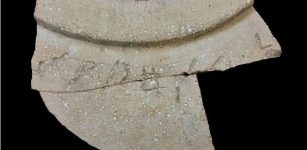 Puzzling Sabaean Inscription Found On A Large Clay Jar Near The Jerusalem Temple Deciphered
Archaeology | Apr 4, 2023
Puzzling Sabaean Inscription Found On A Large Clay Jar Near The Jerusalem Temple Deciphered
Archaeology | Apr 4, 2023 -
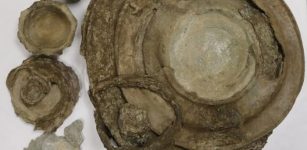 Rare 2,000-Year-Old Roman Hoard Discovered In Suffolk
Archaeology | Jul 5, 2023
Rare 2,000-Year-Old Roman Hoard Discovered In Suffolk
Archaeology | Jul 5, 2023 -
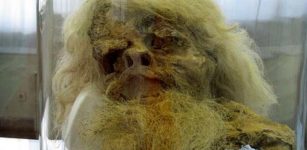 Mystery Of The 1,700-Year-Old ‘Salt’ Mummy With Long White Hair
Featured Stories | Sep 14, 2016
Mystery Of The 1,700-Year-Old ‘Salt’ Mummy With Long White Hair
Featured Stories | Sep 14, 2016 -
 Extraordinary 5,000-Year-Old Astronomical Event Depicted On Indian Rock Carving
Archaeoastronomy | Jan 9, 2018
Extraordinary 5,000-Year-Old Astronomical Event Depicted On Indian Rock Carving
Archaeoastronomy | Jan 9, 2018 -
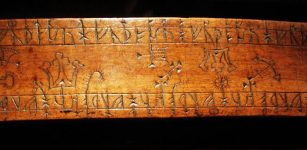 Vikings And The Runic Calendar
Artifacts | Mar 4, 2016
Vikings And The Runic Calendar
Artifacts | Mar 4, 2016 -
 Khufu Boat And Unique Boat-Building Technique Of Ancient Egyptians
Artifacts | Jun 20, 2017
Khufu Boat And Unique Boat-Building Technique Of Ancient Egyptians
Artifacts | Jun 20, 2017 -
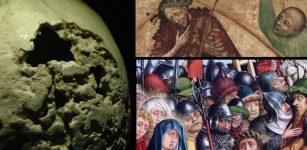 Manuscripts And Art Support Evidence That Syphilis Was In Europe Long Before Explorers Could Have Brought It Home
Featured Stories | Jul 15, 2022
Manuscripts And Art Support Evidence That Syphilis Was In Europe Long Before Explorers Could Have Brought It Home
Featured Stories | Jul 15, 2022 -
 Ancient Bone Reveals Syphilis May Have Originated In The Americas – Columbus Theory Questioned By Scientists
Archaeology | Dec 20, 2024
Ancient Bone Reveals Syphilis May Have Originated In The Americas – Columbus Theory Questioned By Scientists
Archaeology | Dec 20, 2024 -
 Giant Balor Of The Evil Eye – Terrifying Fomorian King And Grandfather Of Celtic God Lugh
Celtic Mythology | Apr 30, 2018
Giant Balor Of The Evil Eye – Terrifying Fomorian King And Grandfather Of Celtic God Lugh
Celtic Mythology | Apr 30, 2018 -
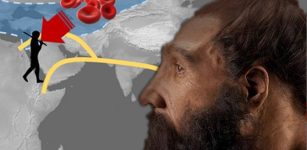 Neanderthal And Denisovan Blood Groups Deciphered And The Results Are Surprising
Archaeology | Aug 2, 2021
Neanderthal And Denisovan Blood Groups Deciphered And The Results Are Surprising
Archaeology | Aug 2, 2021 -
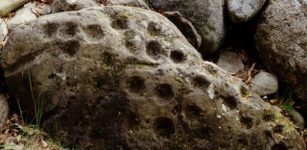 Largest Collection Of Ancient “Cup-Marked” Rocks Ever Found In Scotland
Civilizations | Nov 23, 2018
Largest Collection Of Ancient “Cup-Marked” Rocks Ever Found In Scotland
Civilizations | Nov 23, 2018 -
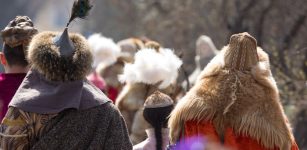 Something Unexpected Stopped Mongol Hordes From Conquering Europe
Featured Stories | Jul 11, 2017
Something Unexpected Stopped Mongol Hordes From Conquering Europe
Featured Stories | Jul 11, 2017 -
 Hundreds of Monumental ‘Kites’ Spotted in Arabian Desert
Archaeology | Sep 12, 2022
Hundreds of Monumental ‘Kites’ Spotted in Arabian Desert
Archaeology | Sep 12, 2022 -
 Rare Artifacts Found In Nottingham’s Mysterious Caves On Display For The First Time
Archaeology | Feb 7, 2024
Rare Artifacts Found In Nottingham’s Mysterious Caves On Display For The First Time
Archaeology | Feb 7, 2024 -
 2,000-Year-Old Celtic Dice Discovered In Poland
Archaeology | Oct 11, 2023
2,000-Year-Old Celtic Dice Discovered In Poland
Archaeology | Oct 11, 2023 -
 1,700-Year-Old Vase For Olive Oil And Wine Unearthed At Historic Site Of Diyarbakir Fortress, Turkey
Archaeology | Aug 5, 2022
1,700-Year-Old Vase For Olive Oil And Wine Unearthed At Historic Site Of Diyarbakir Fortress, Turkey
Archaeology | Aug 5, 2022 -
 Hundreds Of Ancient Ceremonial Sites Discovered Near Aguada Fénix – The Largest And Oldest Maya Monument In Mexico
Archaeology | Nov 8, 2021
Hundreds Of Ancient Ceremonial Sites Discovered Near Aguada Fénix – The Largest And Oldest Maya Monument In Mexico
Archaeology | Nov 8, 2021 -
 Ancient Mystery Of Upton Chamber Cave In Massachusetts: One Of The Largest Ancient Man-Made Structures In New England
Featured Stories | Oct 10, 2017
Ancient Mystery Of Upton Chamber Cave In Massachusetts: One Of The Largest Ancient Man-Made Structures In New England
Featured Stories | Oct 10, 2017 -
 Mysterious And Sacred Intihuatana Stone Of The Inca Was More Than Just An Astronomy Calendar
Archaeoastronomy | May 8, 2018
Mysterious And Sacred Intihuatana Stone Of The Inca Was More Than Just An Astronomy Calendar
Archaeoastronomy | May 8, 2018 -
 Sacred ‘Sign Posts’ Of The Inuit People
Ancient History Facts | Sep 4, 2018
Sacred ‘Sign Posts’ Of The Inuit People
Ancient History Facts | Sep 4, 2018

